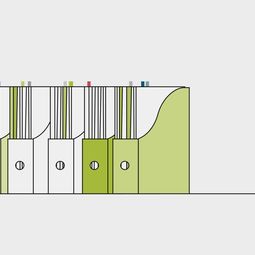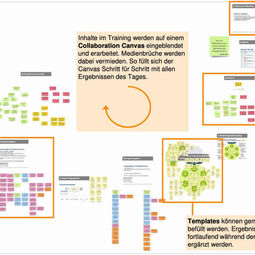23. Mai 23

Process Experience Mapping
Analysing internal processes through the eyes of customers – a case study
Internal disputes and inefficiencies in key processes can be a major source of frustration and lost revenue for companies. To identify and address such issues, organizations often conduct process analyses that map out the steps involved in a given workflow. However, this approach can miss an important piece of the puzzle: the customer's perspective.
This article presents a case study that demonstrates the method's value. Two departments of a big company are accountable for a relevant key process. In the last two years since this process was introduced, the departments have repeatedly had internal disputes, even though the process is neatly documented. Therefore, they decided to conduct an interface analysis to uncover its weaknesses. Normally, in a process analysis, the target process and the actual process are mapped and compared. Since this is a process that is needed for the onboarding of new customers, we decided to choose a different, more unconventional method. In an outside-in approach we observed the dependency between the customer journey and internal processes.
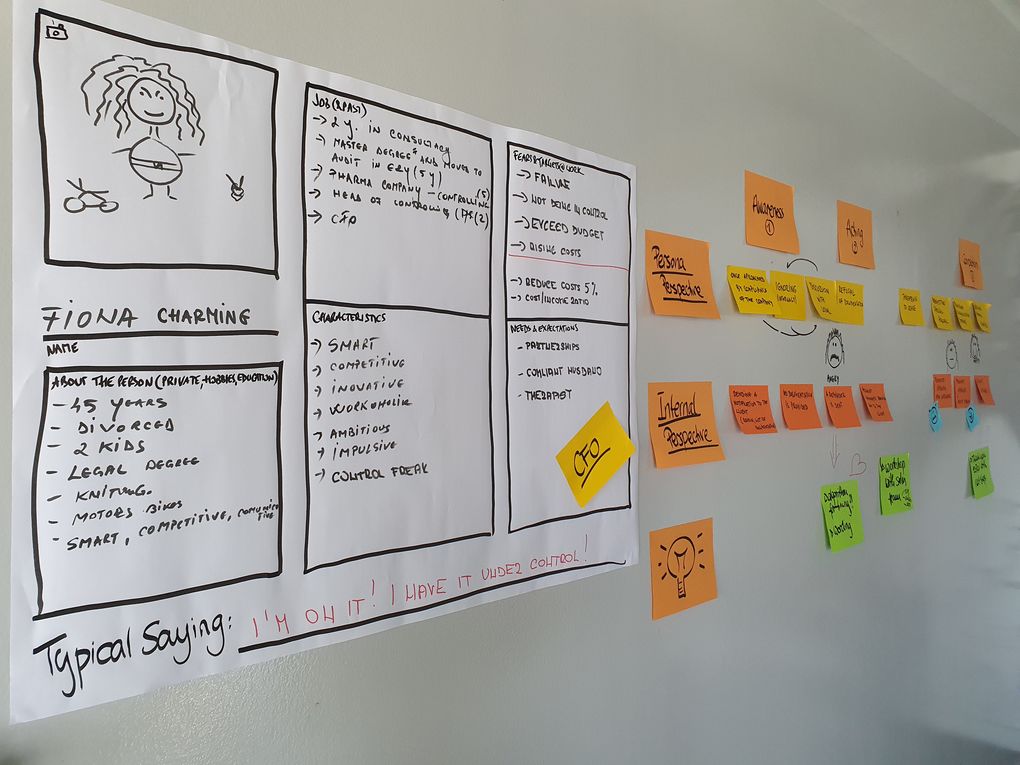
This is how we proceeded in a one-day workshop:
- Interdisciplinary groups designed personas for their key target groups. This exercise enables the groups to develop a good feeling for their target group and consequently, to put themselves in their customers' shoes. This exercise is usually a lot of fun because the groups starts telling stories about customers to get a good idea of who the persona of the relevant target group is.
- Then the groups went through the process of 'customer acquisition' as their persona. The task was to map solely the customer’s experience step by step. By combining the knowledge of all participants and some creativity it was possible to get a very good hypothesis about what steps the customer might really go through. The trick is to really think “as the customer” and not “about the customer”.
- The next step was crucial: the group had to find the “moments of truth” – the emotional high- and lowlights of the customer’s journey. These moments were marked with special symbols or smileys to represent the emotions. Empathizing with customers’ experiences and emotions only works if you have spent some time putting yourself in their shoes. Through personification, one becomes emotionalised oneself, which fosters the process of understanding.
- In the last creation step, the groups could put themselves in the shoes of their own company again and add a line on the mapping of the most important steps of their own internal process. The timestamps of the internal steps must visually match the timeline of the customer’s experience. Again, the internal emotional high- and lowlights were added, as well as the core problems, which were marked with a lightning bolt.
- Finally, the groups had to take a step back and reflect on their maps. What they discovered was amazing to them. The most stressful moments of the customers correlated in time with the biggest internal problems. This made the departments realise that their internal disputes could not be solved just by further improving a process (which was already well worked out). Developing a common understanding of how to deal with customers’ emotions together as one company was one of the most important lessons learned that day.
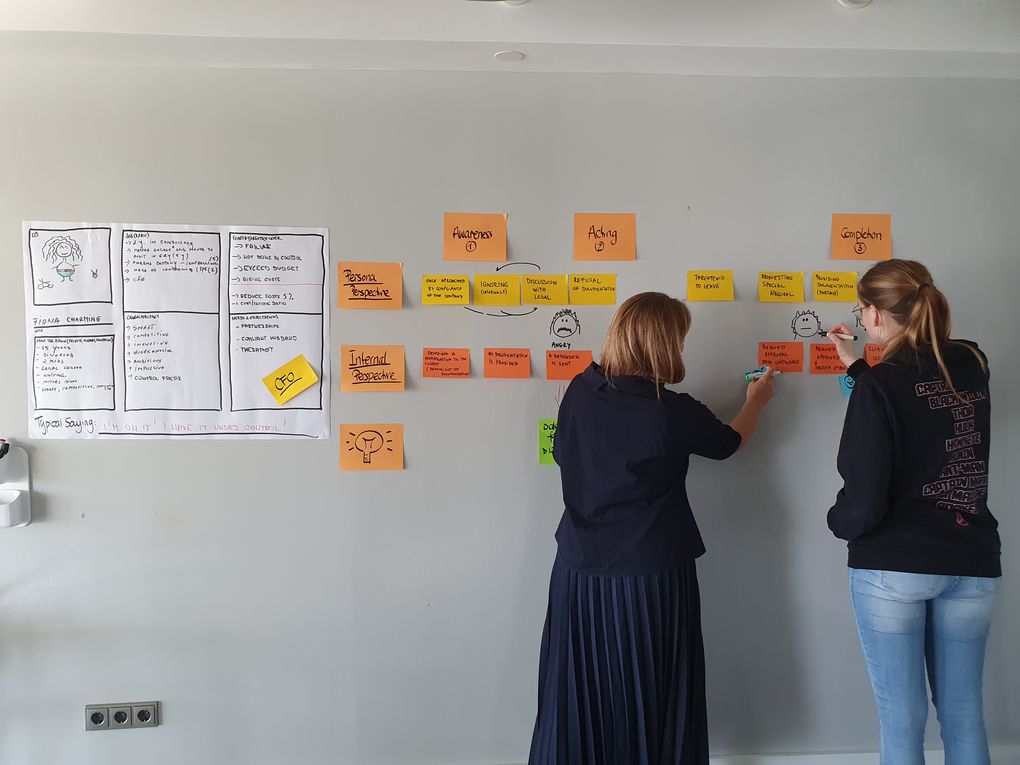
Why was this case successful?
- The approach of playfully exploring supported an interplay of different forms of cognition – cognitive and emotional.
- The customer as the focus and the change of perspective united the mixed group which was in a tense situation, around a common experience.
- The playful methodology allowed for a certain lightness, fun and laughter about a tense topic.
- Without the circular view from a new angle, the group would not have realised that the functioning process is shaped by emotional influences from customers at internal interfaces.
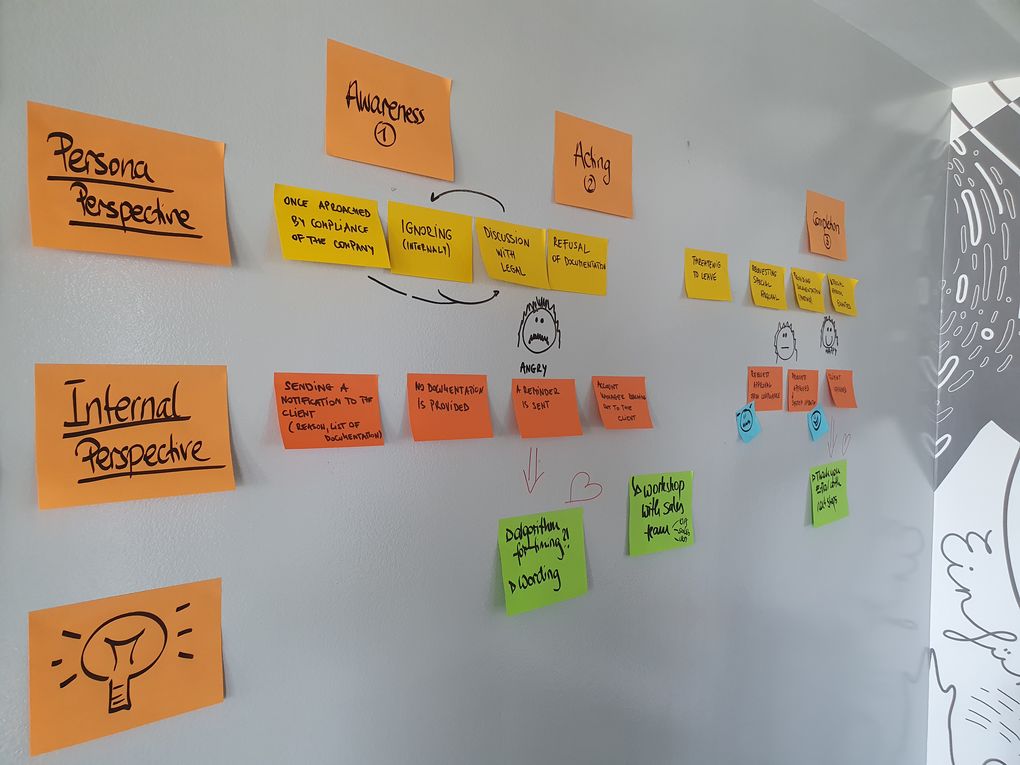
If we had had even more time, the integration of more departments would have broadened the perspectives. In addition, a phase with real customer integration would have supported the learning effect even more. Talking to real customers challenges one’s own hypotheses and enhances the knowledge gained.
This case also shows how important it is to take the customer seriously in process design, especially if the process involves direct or indirect customer interaction. Taking Customer Experience (CX) seriously as a company also means working with CX-methods and integrating them into process analyses.


